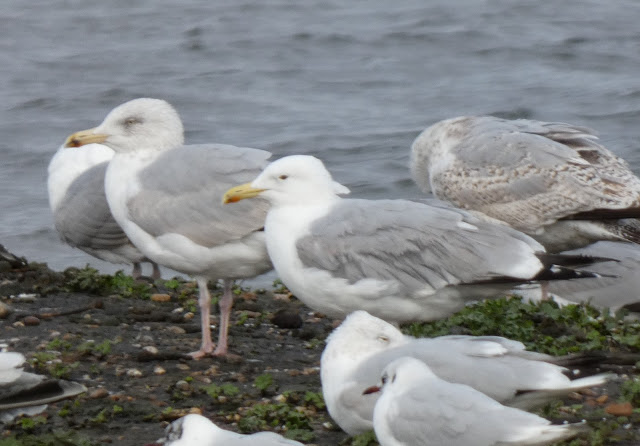Wildlife sightings for 20th February 2014
3 Bittern - north and south shores of the Main Lake
2 Stonechat - marsh (north bund)
1 Chiffchaff - sheltered lagoon
8 Redpoll - sheltered lagoon and south route
3 Reed Bunting - reedbed, main lake
6 Snipe - marsh and scrape
37 Lapwing - main lake, scrape, marsh
40 Wigeon - marsh and scrape bank
110 Teal - marsh and scrape
80 Shoveler - main lake, marsh, scrape, resr lagoon
220 Black-headed Gull - main lake
February bird highlights: Bittern, Jack Snipe, Green Sandpiper, Golden Plover, Little Gull, Caspian Gull, Yellow-legged Gull, Bearded Tit, Brambling, Mealy Redpoll.
3 Bitterns have been spotted this month, mostly on the north and south shores of the main lake, with movements into the main reedbed at dusk for roosting.
Smaller numbers of Redwing have still been roosting every evening in the trees around World Wetlands and Wildside. Most of the berries on the Hawthorn, Dog Rose, Holly, Rowan and Guelder Rose have been stripped now.
1-2 Jack Snipe are present still at the start of February, taking advantage of the flooded grazing marsh or the wader scrape. Teal numbers remain high, their favoured feeding grounds being the exposed mud on the wader scrape and the grazing marsh, particularly during high tide when large numbers leave the river to visit the reserve instead. Shovelers remain steady at 70-100 birds, again making use of the flooded grazing marsh for loafing, feeding and roosting.
There’s been some interesting Gull sightings (Caspian and Little Gulls) with many birds being moved around the country by the floods in search of feeding and roosting sites.
Early signs of spring include singing Chaffinch, Great Tit, Song Thrush, Goldfinch, Cetti’s Warbler; as well as a pair of displaying Great Crested Grebe; Starlings investigating nest boxes and brick cavities.
Early flowering plants: Red Dead-Nettle, Blackthorn, Petty Spurge, Mouse-Ear, Yarrow. Some Hawthorns are already in leaf, particularly in wildside.



